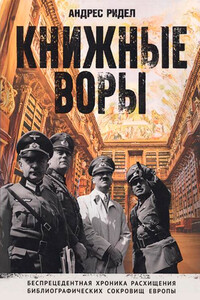The Run of His Life: The People v. O. J. Simpson - [9]
Steven Schwab watched reruns of The Dick Van Dyke Show seven nights a week. Like Fenjves, Schwab was a screenwriter. He had enjoyed less success in the business than Fenjves, however, and so lived more modestly, in an apartment on Montana Avenue, about three blocks from Nicole. The burly and bearded Schwab spoke in an almost eerie monotone, which seemed to match the extreme regularity of his habits. As he later testified, “During the week I would walk my dog between 11:00 and 11:30 so that when I got home I was able to watch The Dick Van Dyke Show on TV. On the weekends I walked the dog between 10:30 and 11:00 because The Dick Van Dyke Show ends at 10:30 on the weekend.” As June 12, 1994, was a Sunday, he set out with his dog, Sherry, shortly after his favorite program ended, at 10:30 P.M.
Schwab walked his regular route around the neighborhood, a circuit he followed as religiously as he did his television schedule. The route, he said, “is one that I designed to take about a half hour to get me home so I can watch whatever shows I want.” At about 10:55 P.M., when he passed the alley behind Nicole’s home, Schwab saw something unusual: a beautiful white Akita that was barking at a house. It paused to look at Schwab and then barked at the house again. Curious about the behavior and a little worried about this seemingly abandoned animal, Schwab approached the dog, let it sniff him, and examined its collar. He noticed that the collar was expensive-“It wasn’t something that I could afford to get for my own dog”-but it did not give a name or address. As he studied the dog more carefully, Schwab noticed something else. There was blood on all four of the animal’s paws.
Schwab couldn’t figure out where the dog belonged, so he just headed home. The Akita followed him. (In August 1994, the Akita would be “interviewed” by Sergeant Donn Yarnall, the chief trainer of the Los Angeles Police Department’s “K-9 Patrol.” Yarnall’s report described the dog as having a “very nice disposition” but “inadequate instincts or courage to protect his territory, owner or himself.”) With the dog right behind him, Schwab made it home shortly after 11:00, just after The Mary Tyler Moore Show had begun. Eight months later, Schwab remembered that “it was an episode that I had seen previously, involving Mary dating someone from a rival station.” Schwab told his wife, Linda, that a large dog had followed him home. “You’re kidding,” she said, but then he pointed to the Akita, which was waiting patiently on the landing outside their second-floor apartment. While Steven and Linda pondered what to do, they gave the dog some water. As they were talking, at about 11:40 P.M. the Schwabs’ neighbor Sukru Boztepe walked into the apartment complex. A freelance laser printer repairman who still speaks with the accent of his native Turkey, Boztepe and his Danish-born wife, Bettina Rasmussen, had hosted a garage sale with the Schwabs earlier that day.
After the two couples chatted for a few minutes, Boztepe agreed that he and his wife would keep the dog for the night. But when they took it inside, Boztepe later testified, the “dog was acting so nervous running around, scratching the door, and we didn’t feel comfortable sleeping with such a big dog in the apartment, and we decide to take the dog for a walk. So we took it.” They let the Akita lead them, and the dog pulled them back toward Bundy Drive-“It was getting more nervous and it was pulling me harder.” Just after midnight, the dog stopped in front of a gate on Bundy that was labeled 875. Boztepe remembered that the area was so dark that he never would have looked down the pathway behind the gate if the dog had not called his attention to it.
What did he see there?
“I saw a lady laying down full of blood.”
2. PARKER CENTER
Officer Robert Riske of the Los Angeles Police Department was patrolling West Los Angeles in a black-and-white squad car when his radio summoned him at 12:09 A.M. on June 13. There had been a report of a crime from 874 South Bundy, in Brentwood. Four minutes later, Riske and his partner arrived at the address, which was the home of an elderly woman, Elsie Tistaert. She had called the police because a few moments earlier, a man and a woman-Sukru Boztepe and Bettina Rasmussen, it would turn out-had banged on her door. It wasn’t the kind of thing that usually went on in the neighborhood, and Tistaert was scared. She called 911 and reported a possible attempted burglary of her home.
When Riske rolled up to the scene, he found Boztepe and Rasmussen, who were still tending to Kato-the-Akita, and the officer quickly straightened out the confusion about why the police were needed. Boztepe took Riske across the street and showed him the pathway to number 875. The officer shined his flashlight on the corpse of Nicole Brown Simpson.
Nicole was lying at the base of four stairs that led up to a landing and the front door. The pool of blood around her was bigger than she was. Blood covered much of the imitation-tile walkway leading to the stairs, a path that was bordered on both sides by shrubbery. When Riske pointed his flashlight to the right, he saw another body. It was a muscular young man with his shirt pulled up over his head. The man, later identified as Ronald Goldman, was slumped against the metal fence that separated 875 from the property next door. Near Goldman’s feet, Riske identified three items: a black hat, a white envelope stained with blood, and a single leather glove. Turning back to Nicole, Riske made out a single fresh heel print in the blood next to her body. Perhaps the most important thing to Riske was what he didn’t find: Despite all the blood, there were no bloody shoe prints coming out the front gate onto the sidewalk by Bundy Drive.

10 мая 1933 года на центральных площадях немецких городов горят тысячи томов: так министерство пропаганды фашистской Германии проводит акцию «против негерманского духа». Но на их совести есть и другие преступления, связанные с книгами. В годы Второй мировой войны нацистские солдаты систематически грабили европейские музеи и библиотеки. Сотни бесценных инкунабул и редких изданий должны были составить величайшую библиотеку современности, которая превзошла бы Александрийскую. Война закончилась, но большинство украденных книг так и не было найдено. Команда героических библиотекарей, подобно знаменитым «Охотникам за сокровищами», вернувшим миру «Мону Лизу» и Гентский алтарь, исследует книжные хранилища Германии, идентифицируя украденные издания и возвращая их семьям первоначальных владельцев. Для тех, кто потерял близких в период холокоста, эти книги часто являются единственным оставшимся достоянием их родных.

Доклад разведсообщества США о причастности России к хакерским атакам избирательной системы вызвал противоречивую реакцию в СМИ: многие сочли его недостаточно убедительным, российские парламентарии назвали «прямым оскорблением американцев». Открытая Россия полностью перевела незасекреченную часть доклада - чтобы читатели могли самостоятельно составить о нем свое мнение.Документ содержит аналитические выводы, сделанные и совместно согласованные Центральным разведывательным управлением (ЦРУ), Федеральным бюро расследований (ФБР) и Агентством национальной безопасности США (АНБ)

Шотландия всегда находилась в тени могущественной южной соседки Англии, в борьбе с которой на протяжении многих столетий страна пыталась отстоять собственную независимость. Это соседство, ставшее причиной бесчисленных кровопролитных сражений, определило весь ход шотландской истории. И даже сегодня битва продолжается — уже не вооруженная, а экономическая, политическая, спортивная.Впрочем, борьбой с Англией история Шотландии вовсе не исчерпывается; в ней немало своеобычных ярких и трагических страниц, о которых и рассказывает автобиография этой удивительной страны, одновременно романтической и суровой, сдержанной и праздничной, печальной и веселой.

В книге рассказывается история главного героя, который сталкивается с различными проблемами и препятствиями на протяжении всего своего путешествия. По пути он встречает множество второстепенных персонажей, которые играют важные роли в истории. Благодаря опыту главного героя книга исследует такие темы, как любовь, потеря, надежда и стойкость. По мере того, как главный герой преодолевает свои трудности, он усваивает ценные уроки жизни и растет как личность.

В книге рассказывается история главного героя, который сталкивается с различными проблемами и препятствиями на протяжении всего своего путешествия. По пути он встречает множество второстепенных персонажей, которые играют важные роли в истории. Благодаря опыту главного героя книга исследует такие темы, как любовь, потеря, надежда и стойкость. По мере того, как главный герой преодолевает свои трудности, он усваивает ценные уроки жизни и растет как личность.